#minolta cle camera
Explore tagged Tumblr posts
Text
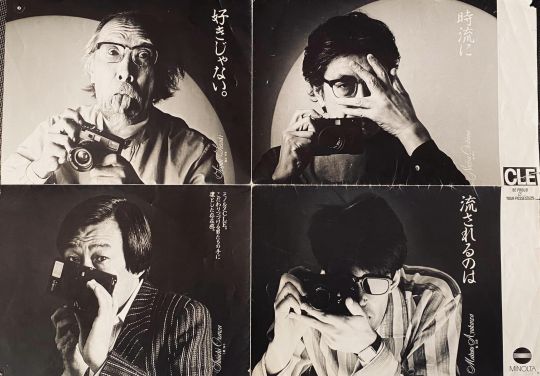
Minolta CLE Camera advertising poster featuring Nagisa Oshima, Makoto Ayukawa, Seijun Suzuki, and Shoichi Ozawa.
#nagisa oshima#大島渚#seijun suzuki#鈴木清順#Makoto Ayukawa#Seijun Suzuki#鮎川誠#Shoichi Ozawa#小沢昭一#minolta#minolta cle#minolta cle camera#camera#advertising#design
448 notes
·
View notes
Text

Shinjuku
Minolta CLE with 50mm f2.8 Elmar-M lens
39 notes
·
View notes
Text
Minolta Six Camera
It seems like I purchase items from camera auctions in "lots," and there is always a treasure hidden in the background that you either didn't notice at first, is hidden within all the photos of the items, or, in this case, the camera wasn't taken out of the case, and the case was obscured, so there was no visual evidence that the camera was.
As I unwrapped the cameras won from the auction, one brown case caught my eye. It bore a striking resemblance to the Mamiya Six in my collection. But upon closer inspection, the name 'Minolta Six' was revealed. I initially thought it might be similar to the Mamiya Six, but the truth was far more exciting, as I'll reveal when I introduce the camera.
History:
In an earlier post, I did on the Minoltaflex CDS, I did a brief history of the company, which read,
Kazuo Tashima founded Minolta in Osaka, Japan, in 1928 as Nichi-Doku Shashinki Shōten, which means Japanese-German Camera Shop. In 1931, the company updated its name to Minolta, which stands for Mechanism, Instruments, Optics, and Lenses by Tashima. In 1937, the company was reorganized as Chiyoda Kogaku Seikō, K.K. They are now introducing their first Twin Lens Reflex (TLR) camera, the MinoltaFlex, based on the German Rolleiflex cameras. The MinoltaFlex was only the second TLR introduced from Japan after the Prince Flex by Neumann & Heilemann. In 1947, Minolta introduced rangefinder cameras like the Minolta-35, and in 1959, the Single Lens Reflex (SLR) SR-1 camera. In later years, they signed agreements with Leica and came out with the first autofocus SLR, The Minolta Maxxum 7000, which carried on to several in their autofocus system.
To expand slightly from the above text, in the early years, there was a big German influence on the Minolta company, which was known as Nichidoku Shashinki Shōten, which means Japanese, German camera shop. In the early years, the company received help from camera technicians Billy Neumann and Willy Heilemann, and the shutters and lenses were supplied from Germany. Their first camera was the Nicarette, which was released in 1929.
In 1931, the company was transformed into a stock corporation named Molta Gōshi-gaisha. Molta is an abbreviation of Mechanism, Optics, and Lenses by Tashima. Neumann and Heilemann left the company in 1932, returning to Germany to start their own company, and the German influence left with them. In 1933, the name Minolta was adopted. In 1937, the company became Chiyoda Kōgaku Seikō K.K and expanded the production of cameras into TLR and press cameras similar to the Plaubel Makina.
In 1940, the famous Minolta Rokkor lens was produced, but it was only used for the military. Consumer camera production ended in 1943 to concentrate on the war effort. Three of its four plants were destroyed by Allied forces during WWII. Soon after the war, Minolta released the Semi Minolta III, and throughout the 1950s, Minolta expanded its line of cameras to include folding cameras, TLRs, SLRs, and rangefinder cameras.
In 1958, the SR-2 was released, and it was Minolta's first system camera. This reign of SLR system cameras included partnerships with Leitz in the 1970s, which helped produce CLE cameras. Minolta had a full line of autofocus cameras, the Maxxum line of bodies and lenses, and Minoltas final SLR camera ended in 1995 with their X-370.
Minolta produced many different 35mm, APS, and DISC cameras and partnered with Konica in 2003, but by 2006, the camera company had discontinued camera production and relied heavily on the copier business.
My Camera:
Opening the case and looking at the camera for the first time, I was surprised by the Minolta logo and text on top. Since it was made in 1936, it has a genuine Art Deco design in the look and feel of the camera. My biggest surprise was when I initially pulled the lens out from the body and found the camera didn't have a cloth bellows. Instead, it has a series of stacking cubes that pull away from the camera body, AND these boxes are reinforced with another Art Deco element, metal brackets that resemble an "M" when the camera is laid on its back with the lens pointing up. WOW, Just a fantastic design.
The Minolta Six camera measures 6 inches in width, 4.75 inches in height with the finder up, 3.75 inches with the finder closed, and 4 inches in depth with the lens out, or 2.25 inches with the lens closed. It weighs 1 lb. 5.7oz. without the case or loaded with film. The camera's body is made from a bakelite or plastic material, covered in a high-quality leatherette.
To pull the lens out to take photos, there are two grips, one on either side of the lens, that you grab onto to pull the lens out and away from the body. You need to expose three stacking cubes before the camera is ready to take the photos. Under the lens are two curved chrome bars you can slide down to prop the camera up so that when the lens is out, it doesn't tip forward and keeps the lens level.
Around the top of the lens is Patents-Nippon, and below is Crown, which is the shutter on the camera. The actual lens is an 80mm f5.6 Coronar Anastigmat Nippon lens. Around the lens is a manual focus ring that focuses from under 1 meter to infinity. The focus line to judge distance is a protruding tab with a line at approximately 10 O'Clock on the lens face. The lens also has a stopping screw that prevents the lens from rotating past the infinity mark on the tab.
My camera has only four shutter speeds: 1/150, 1/100, 1/50, and 1/25, along with "b" and "T" for timed exposures. On the top of the camera is a pop-up viewfinder with etched or lined crosshairs to line up horizontal or vertical subjects as needed. The back of my camera sports three red windows with different numbers, which are used to line up with the number on the paper backing to get to the proper frame number. In later cameras, they went to a single window system, which is more common with current 6x6 format cameras using 120 film.
To open the back of the camera, there is a latch behind the strap on the left side with an arrow pointing down. Slide the button down, and the camera's back opens. The chrome winding lever was used on the older models. Later they went to a plastic or bakelite knob in the later models. My first thought when I looked at the back of the camera was that it was not a full-frame 6x6 camera, but that was because I was looking at the retracted plastic cubes from the bellows. It is indeed a full 6x6 format camera. Load the film on the right side and bring the leader to the left to take up the spool. The knobs on the bottom of the camera pull out so you can put in the film and take up the reel easily.
The case for my camera is in great condition. There's a pretty cool instruction tab on the inside of the case, which was made for the three window cameras.
The crown shutter doesn't have a cocking mechanism. There's just the shutter release to take the photos. I loaded the film. I pulled out the cube below and started to take pictures of the neighborhood with my trusty light meter. Once I reached the end, I unloaded the film and processed the negatives.
My Results:
Here are some of the photos taken with the Minolta Six camera. The photos were a bit flat in exposure and contrast.
Conclusion:
I enjoyed shooting with the camera, but I am still primarily impressed with the innovative and beautiful bellows system in the camera. Not only is it functional, but it is very light and tight and only wears out slowly compared to the style bellows. The flip side is, if something happens to this bellows, the replacement is hard to replace due to the material. I wished there were faster shutter speeds, but I was using 125 iso film, and with the aperture range of the lens, I didn't have an issue.
I have a great and fun camera for next week's blog post, so I hope you'll stick around to read that one, too. Thank you for your time, and please be safe until then.
#minolta#minolta six#medium format#6x6 format#cameras from japan#cameras from 1930s#folding camera#folding medium format#film#film camera#120 camera#120 film camera#crown shutter#Chiyoda Kōgaku#Chiyoda#manual focus#japanese camera#fun camera#manual camera
0 notes
Text
ALL Works [N MINT] Minolta CLE 35mm Film Camera M Rokkor 40mm f2 late Lens from
CAMERA DEALS: Seller: kyoto.camera-japan (100.0% positive feedback) Location: JP Condition: Used Price: 1099.99 USD Shipping cost: 40.00 USD Buy It Now https://www.ebay.com/itm/404340770167?hash=item5e24968577%3Ag%3Ah3EAAOSwGD5kj7zn&amdata=enc%3AAQAIAAAA4OrkVIbzHFY9eyriIvO5g7Qb5U66w57xWDrM6wUMuAHaOdKiSiaYxd%2FrshXUMK5rrzA64of5ilEI6kE2RQYcJeOnMIhFqdjH2kIHWvlsvWBw8xcyuzbMywetrCw7dhGmLBaC2IKHbttrOzwN%2Bw1SdAavUT%2F5ae4cayT4iK5GJ9AFwy4xLvHH0Uzm3Jf13O3GoHnqHAOWSHFzi5QqnyVVepa%2F7vuKZR3eriGzHjgXLBm8yehqEW3re9eFPcRzjTzSALzwren3ISK58PnWp%2BvuXS3P15TfIsGTQQqm5Ngx4t8u&mkevt=1&mkcid=1&mkrid=711-53200-19255-0&campid=5338779481&customid=&toolid=10049&utm_source=dlvr.it&utm_medium=tumblr
0 notes
Photo
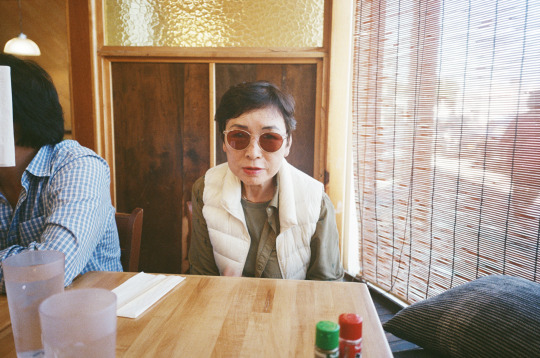
Mom @ Otafuku Noodle House
Gardena, CA
#mom#mama#minolta cle#ricoh gr 28mm#otafuku noodle#film#analog#ishootfilm#filmisnotdead#35mm#kodak gold 400#restaurant#japanese#cute#lunch#rangefinder#compact camera
14 notes
·
View notes
Text

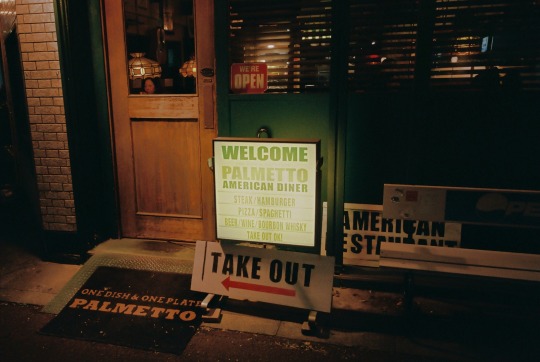
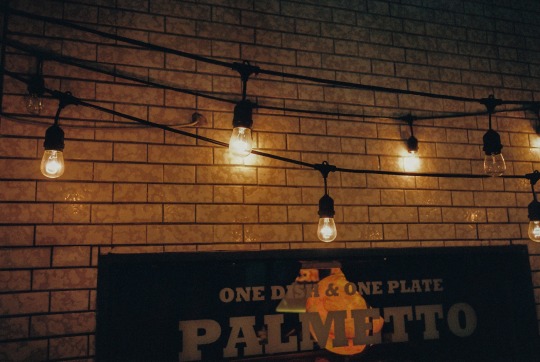
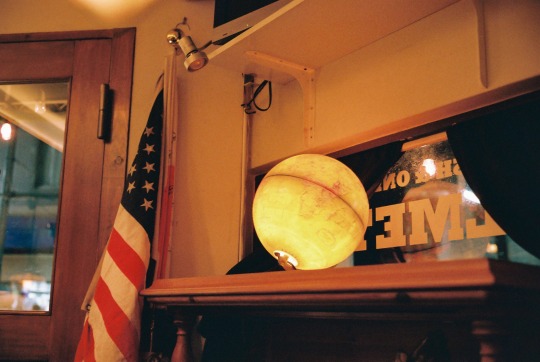
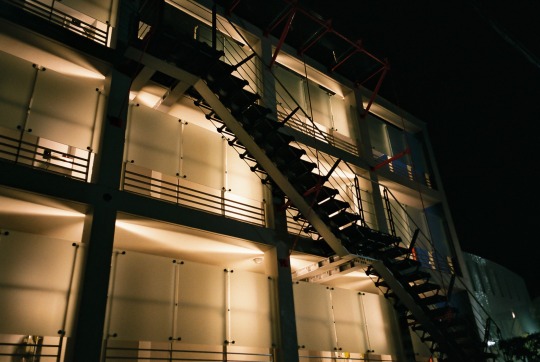

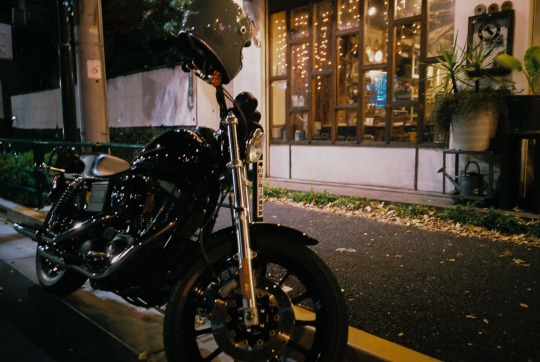
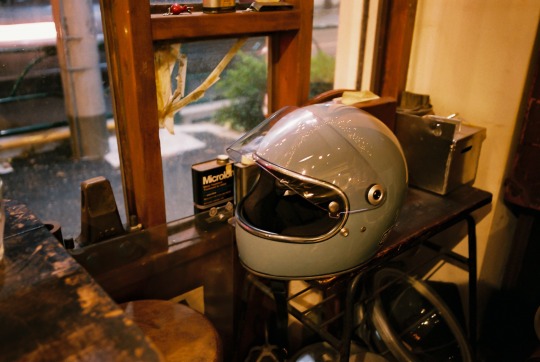
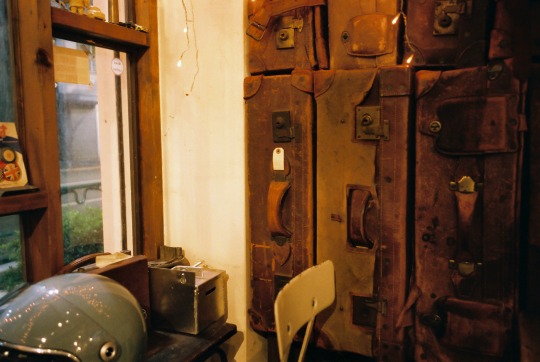
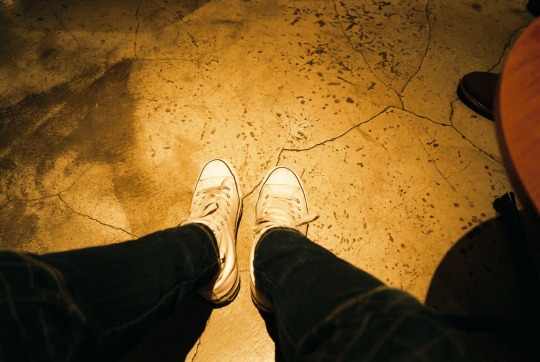
#film photography#minolta#cle#bikelife#motorbike#harley davidson#cafe#vintage#antique#film#gringo#nightscape#night ride#cameras
5 notes
·
View notes
Text
Fujifilm & Leica Expert User Take Kayo Tries Out Fujifilm X-T5 With Fujinon XF 30mm f/2.8 R LM WR Macro For Street Photography & Likes It
Fujifilm & Leica Expert User Take Kayo Tries Out Fujifilm X-T5 With Fujinon XF 30mm f/2.8 R LM WR Macro For Street Photography & Likes It

View On WordPress
#Big Head Taco#bigheadtaco#camera straps#Fujifilm#Fujifilm Canada#Fujifilm X-Pro1#Fujifilm X-Pro2#Fujifilm X-Pro3#Fujifilm X-Pro4#Leica#Leica CL#M-Rokkor 28mm f/2.8#M-Rokkor 40mm f/2.0#M-Rokkor 90mm f/4.0#Minolta CLE#Minolta XG-1#neck straps#Oskar Barnack#Peak Design#Peak Design Clutch#Peak Design Cuff#Peak Design Slide Lite#perfect normal lenses#shoulder straps#standard normal lenses#Take Kayo#wrist straps
0 notes
Photo

Speaking of the process, I would divide it into observation and actual shooting. While observation is constant for me (even if I only have a phone in my pocket), the actual shooting differs from camera to camera. I often shoot in fully manual mode with cameras that have no means of automation, and in low light or complicated conditions it includes metering, then applying the desired settings to the camera controls and only then composing and shooting. . . . Shot with Minolta CLE on Kodak Gold 200 . . . #filmphotography #filmisnotdead #filmisntdead #analogphotography #пленка #плёнка #igalscfilm #35fuckingmillimeter #35мм #analogforever #filmaddicts #minoltacle #kodak #kodakgold200 #rangefinders #rangefinder #thirtyfivemillimeter #thedaily35mm #shootfilmmag #shootfilmunder1000 #filmdiscovered #dmc_mag #shootmorefilm #istillshootfilm #savedonfilm #yyzishome #wechoosefilm (at Toronto, Ontario) https://www.instagram.com/p/CQ1--mcHeRj/?utm_medium=tumblr
#filmphotography#filmisnotdead#filmisntdead#analogphotography#пленка#плёнка#igalscfilm#35fuckingmillimeter#35мм#analogforever#filmaddicts#minoltacle#kodak#kodakgold200#rangefinders#rangefinder#thirtyfivemillimeter#thedaily35mm#shootfilmmag#shootfilmunder1000#filmdiscovered#dmc_mag#shootmorefilm#istillshootfilm#savedonfilm#yyzishome#wechoosefilm
2 notes
·
View notes
Photo
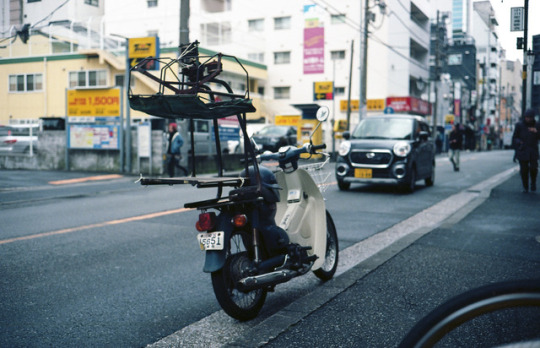
Hang in there
#Japan#Kawasaki#Scooter#transport#EKTAR 100#minolta cle#40mm m-rokkor#shoot film#film photography#35mm film#filmisnotdead#orignal photography#tokyo camera club
6 notes
·
View notes
Text

Yuyake Dandan, Yanaka, Tokyo
Minolta CLE with M-Rokkor 28mm f2.8 lens
28 notes
·
View notes
Text
Minolta CLE 35mm Rangefinder Film Camera Body From Japan [Near Mint]
CAMERA DEALS: Seller: miusa_13 (100.0% positive feedback) Location: JP Condition: Used Price: 659.99 USD Shipping cost: 35.00 USD Buy It Now https://www.ebay.com/itm/354846566749?hash=item529e80e95d%3Ag%3A4rMAAOSw1QZkbD--&amdata=enc%3AAQAIAAAA4KZb2ZvWumhaPtjIG33Raa0uxaSFZe4iexL8XZuyhBWeye4zbvhp%2BnlOU4xxUT0CFbDpM53f0q%2BDqPhehRK7eBKkqAhfKufgoE3Y7iJKzudKN7ydPfx2frl1HCuOOIVy8zaC6q%2B59U7qu8gklWzE16WXgfKHS0ydIJTnbwKkNzeseRaEDOV%2ByiCg9E%2B5LoYhhkx%2FDiNVA55JGL4bQrHIsTpqN%2B6Qr0FqvmFcqN21fgQqjprWARumrED9MNo3XHTndBlldmhGMYRxPHB58j30eU2K442vUV7MynAfnfYyRu6u&mkevt=1&mkcid=1&mkrid=711-53200-19255-0&campid=5338779481&customid=&toolid=10049&utm_source=dlvr.it&utm_medium=tumblr
0 notes
Photo

Carter
Los Angeles, CA
#carter#benjamin grimes#buddy#friend#pal#beard#hipster#Minolta CLE#rangefinder#leica#40mm#m-rokkor#compact camera#film#analog#ishootfilm#filmisnotdead#la#los angeles#saigon pearl#Photographers on Tumblr#photographer
17 notes
·
View notes
Photo
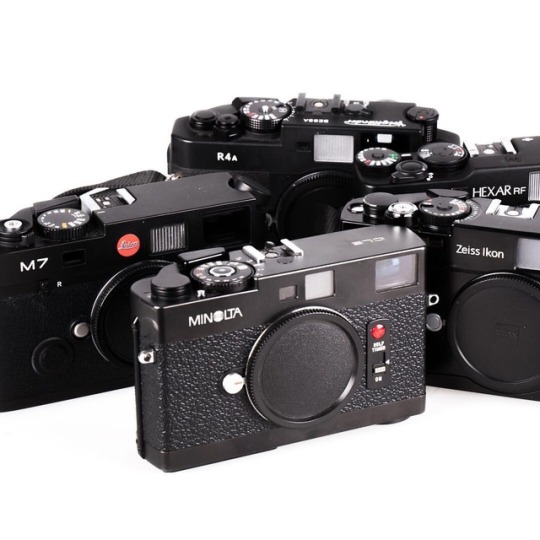
Call a group photo for Leica M mount rangefinder film cameras with auto exposure mode. Here are one from all the five series: 1. Minolta CLE, the first M mount camera with AE. 2. Konica Hexar RF. Basically an M mount G2. 3. Leica M7. My favorite film camera. 4. Voigtlander Bessa R4A. 5. Zeiss ZM. Only the M7 is a keeper. Others come and go. CLE has weird frame lines and very preliminary exposure control. Hexar’s blank paint is too fragile. Bessa R series are lower end build, and ZM is basically an advanced model for the Bessa, but not comparable to the Leica ones. https://www.instagram.com/p/BpNs1_1FEDn/?utm_source=ig_tumblr_share&igshid=1pws7f64c6jd9
15 notes
·
View notes
Photo

Vincent B. Paris, France Minolta CLE
Non-adjustable neck strap-horizontal Black leather, Red wrapping cord
Hi there, I'm a street and travel photographer. I like to use light and simple gear... The Gordy strap sits right in the sweet spot of it. You can check my Instagram (vincentbihler) or my website below.
http://www.vincentbihler.com
4 notes
·
View notes
Photo

Minolta CLE Angenieux 50mm f1.8 Type S1 (L) Coated Ektar100 by Camera of Bob on Flickr.
3 notes
·
View notes
Photo
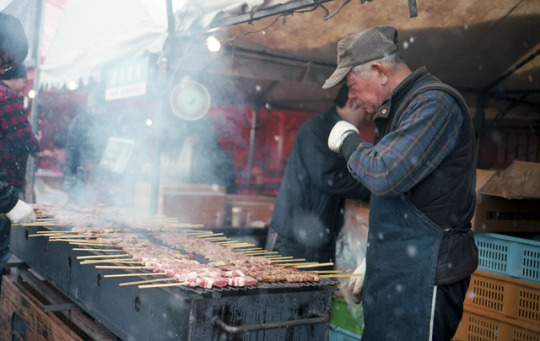
Yakitori feast
#Japan#Akita#Yakitori#feast#Kodak Ektar 100#minolta cle#shoot film#35mm film#filmisnotdead#original photography blog#snow#matsuri#festival#tokyo camera club
8 notes
·
View notes